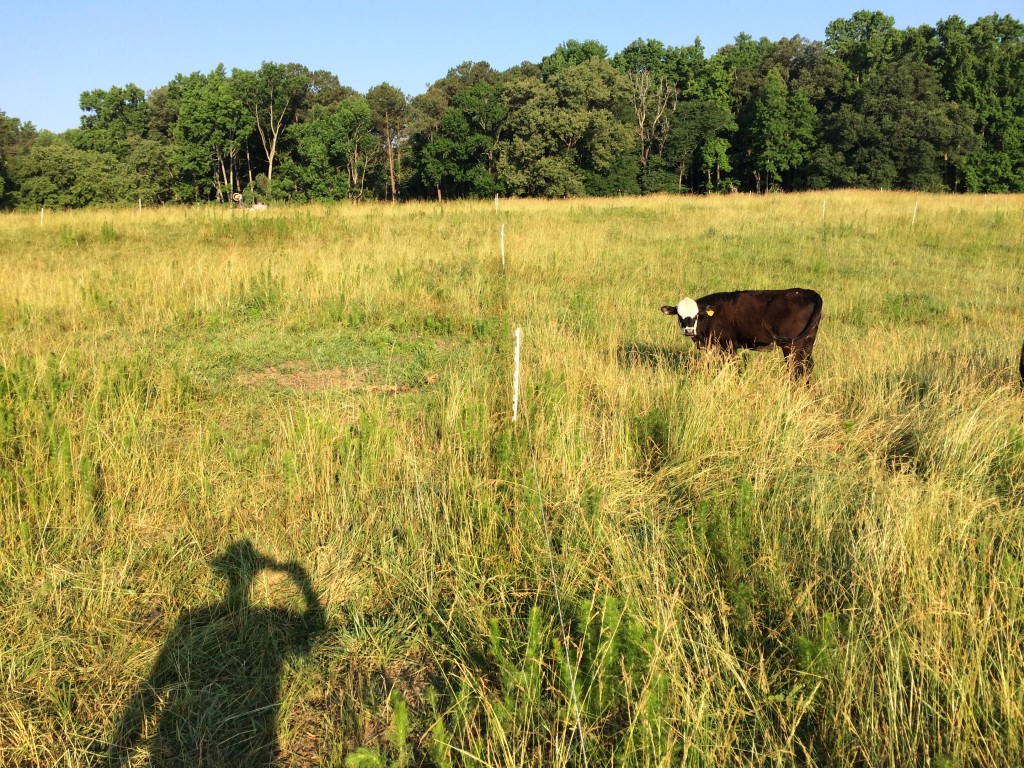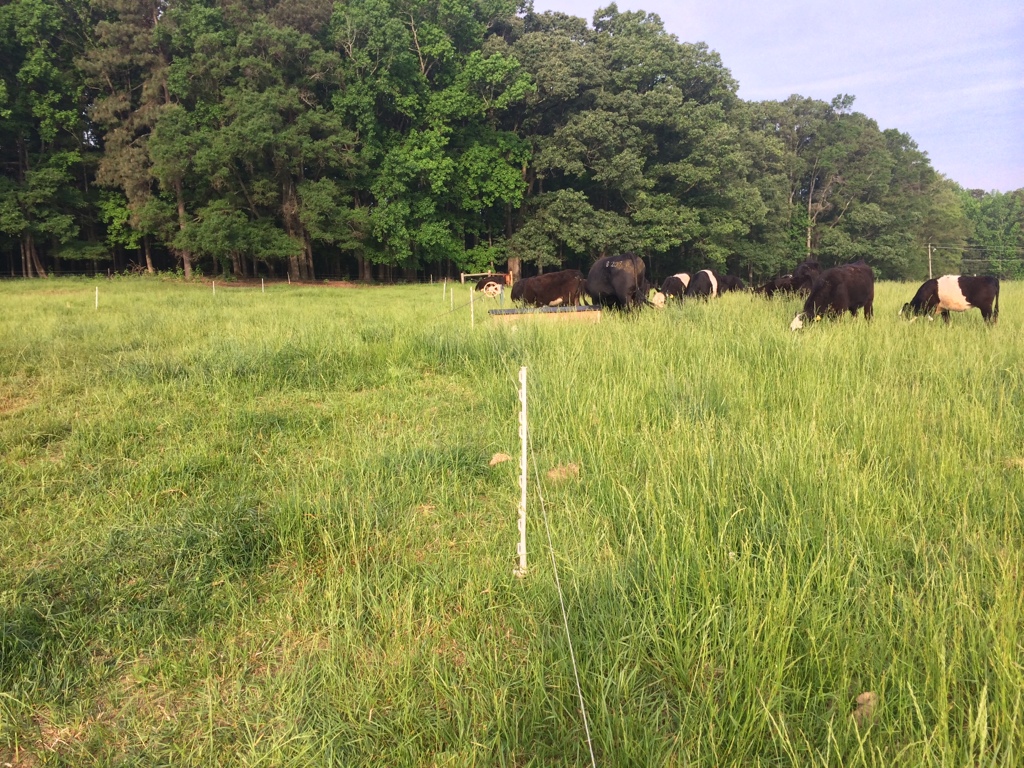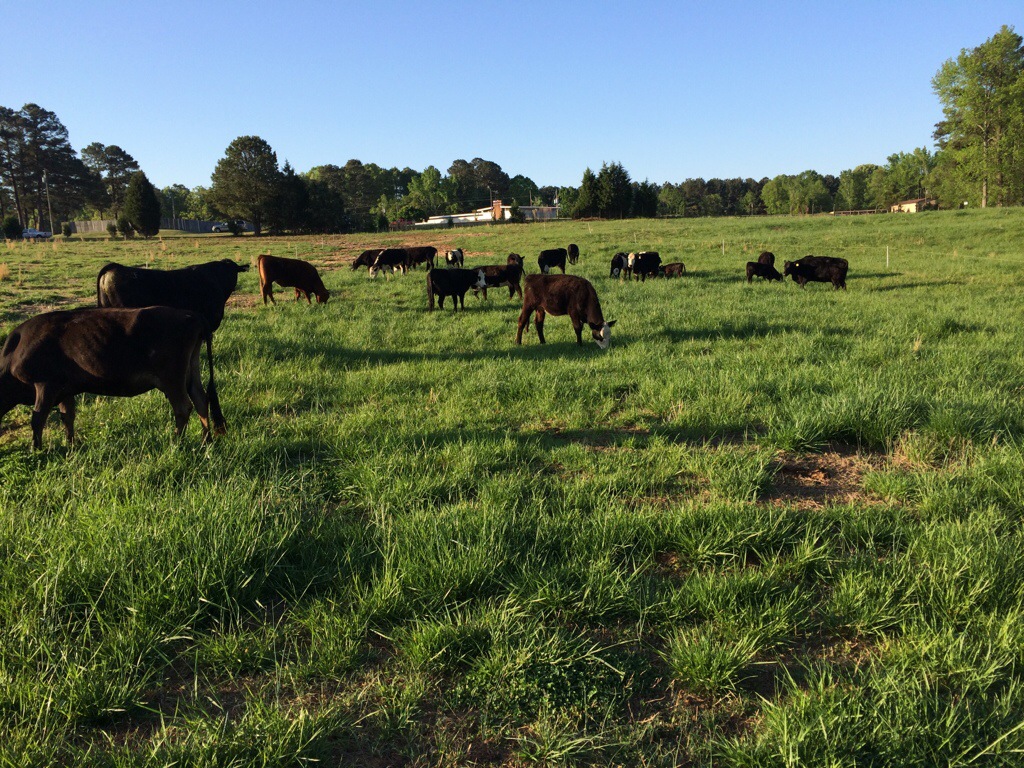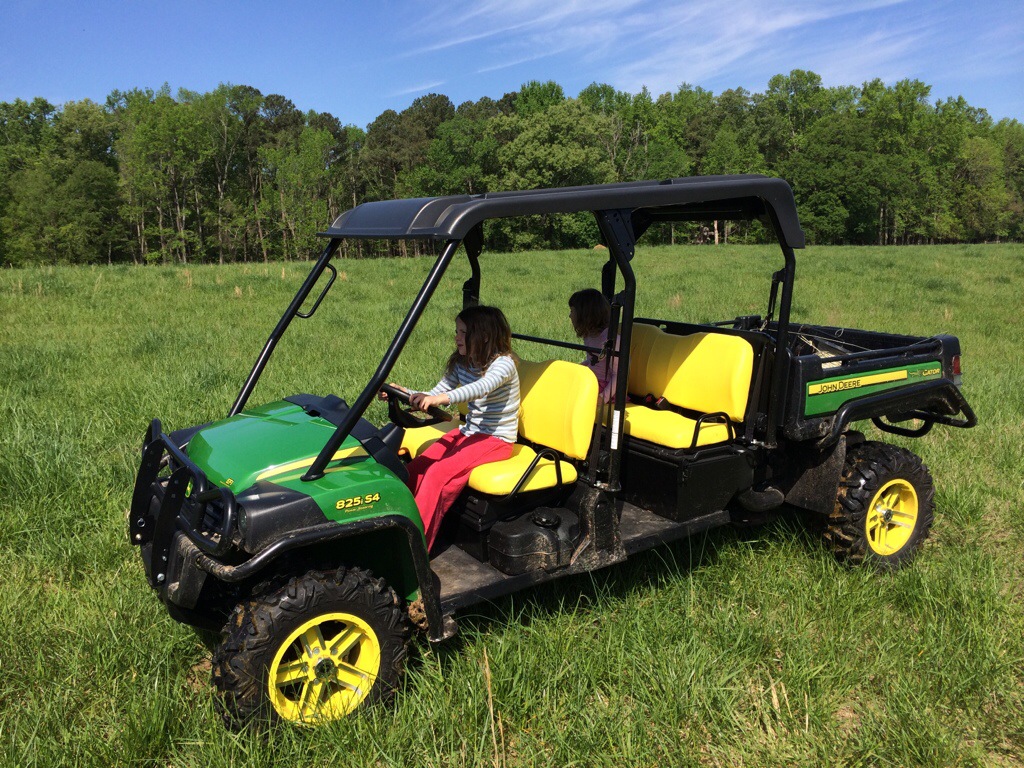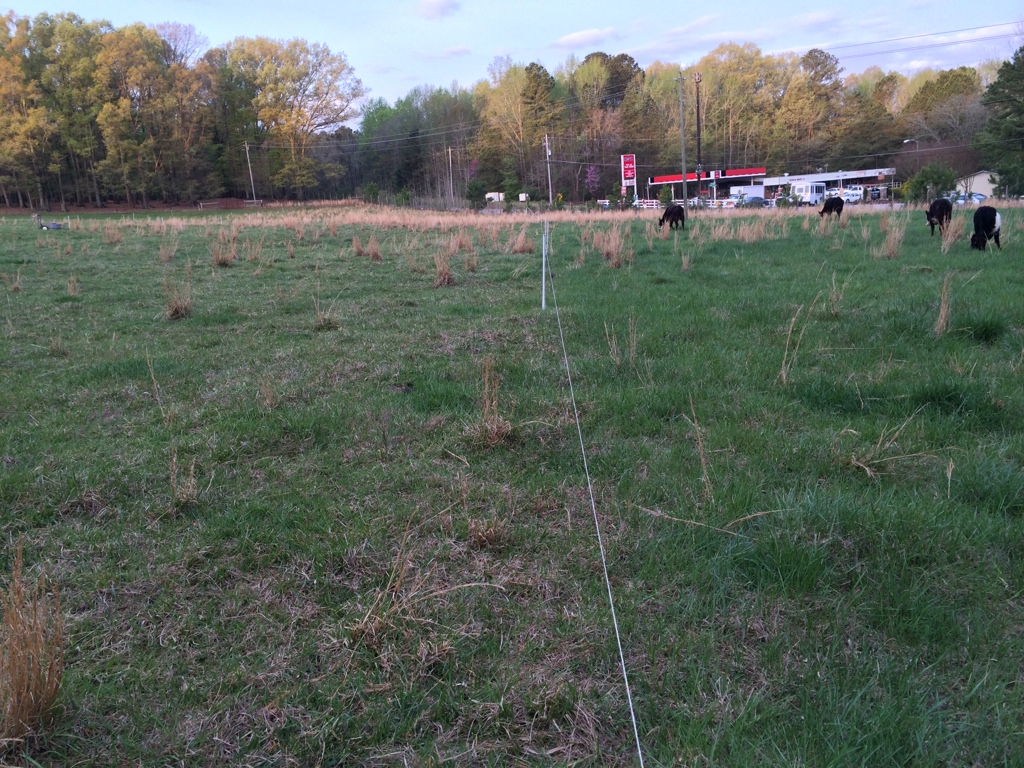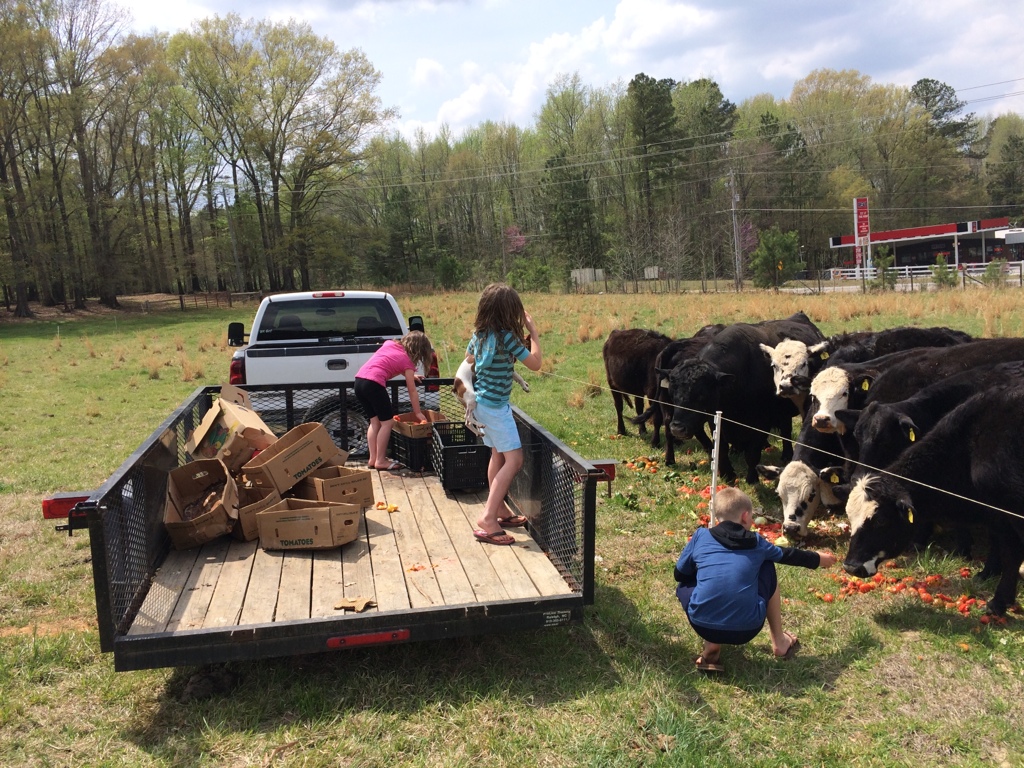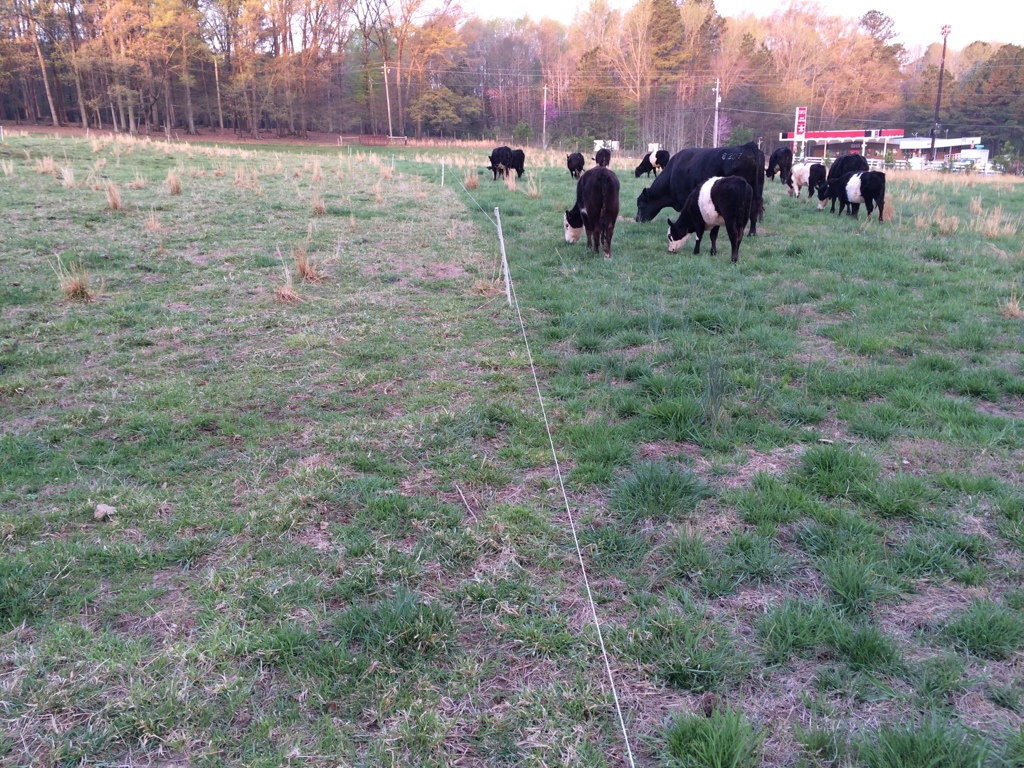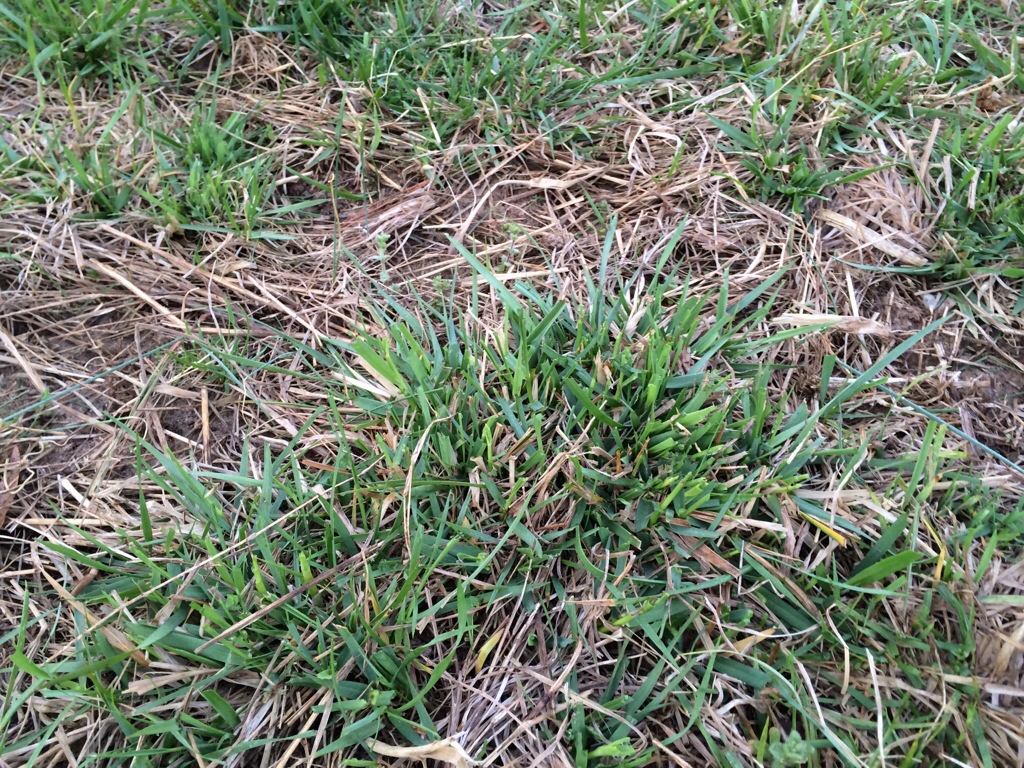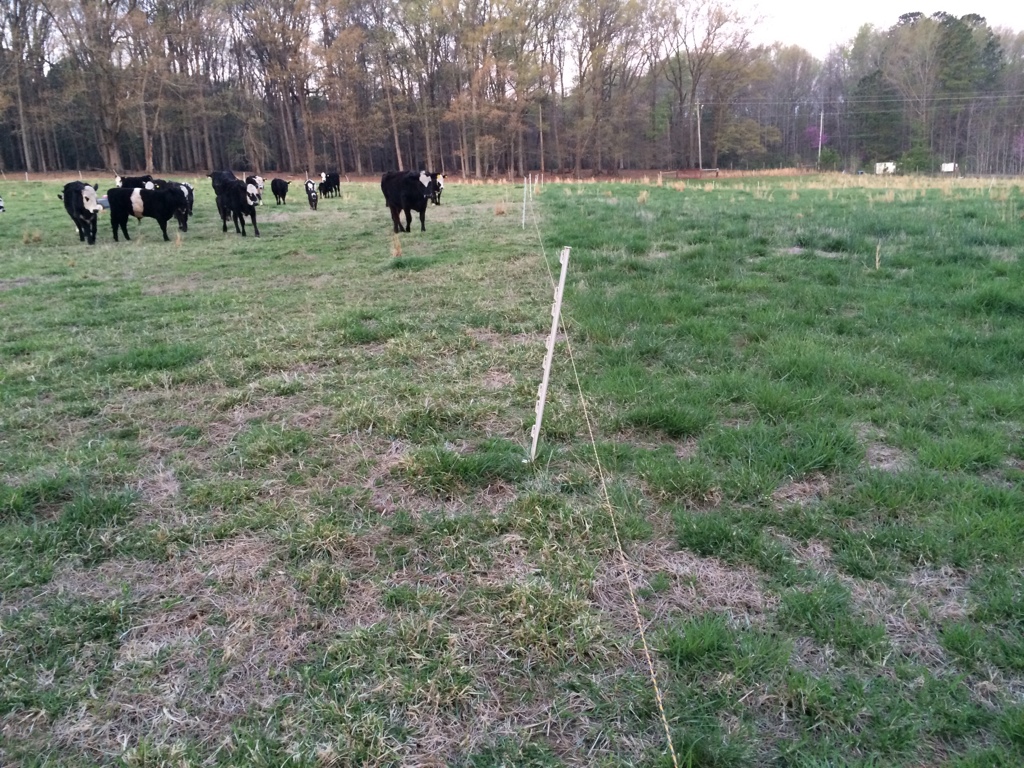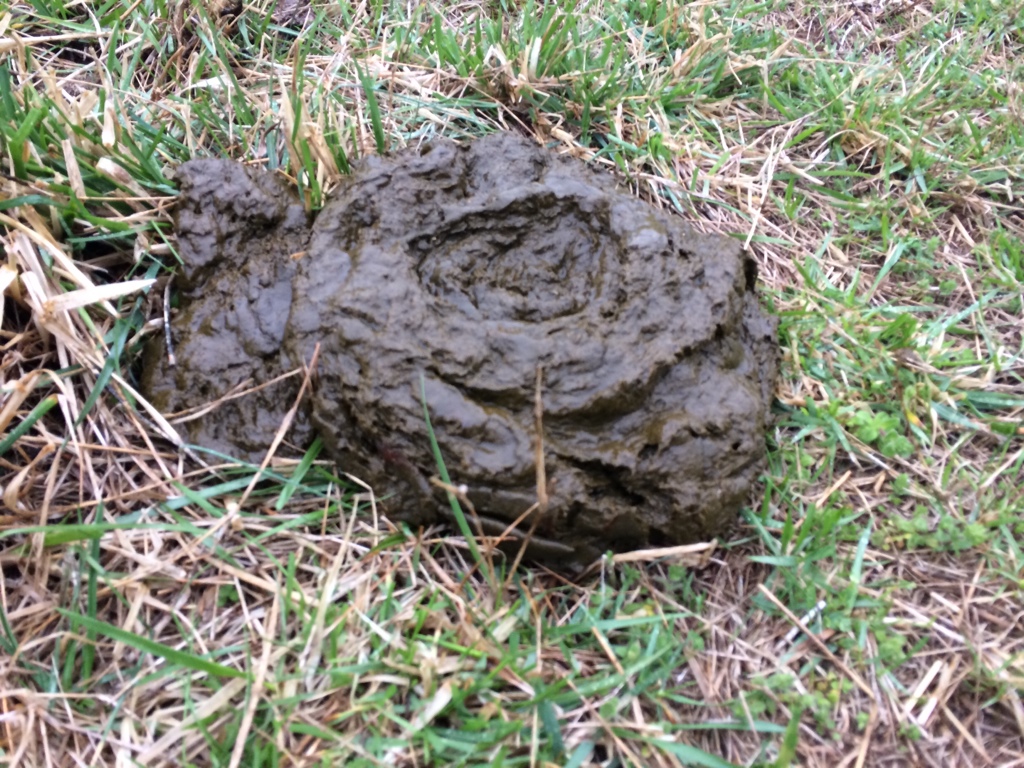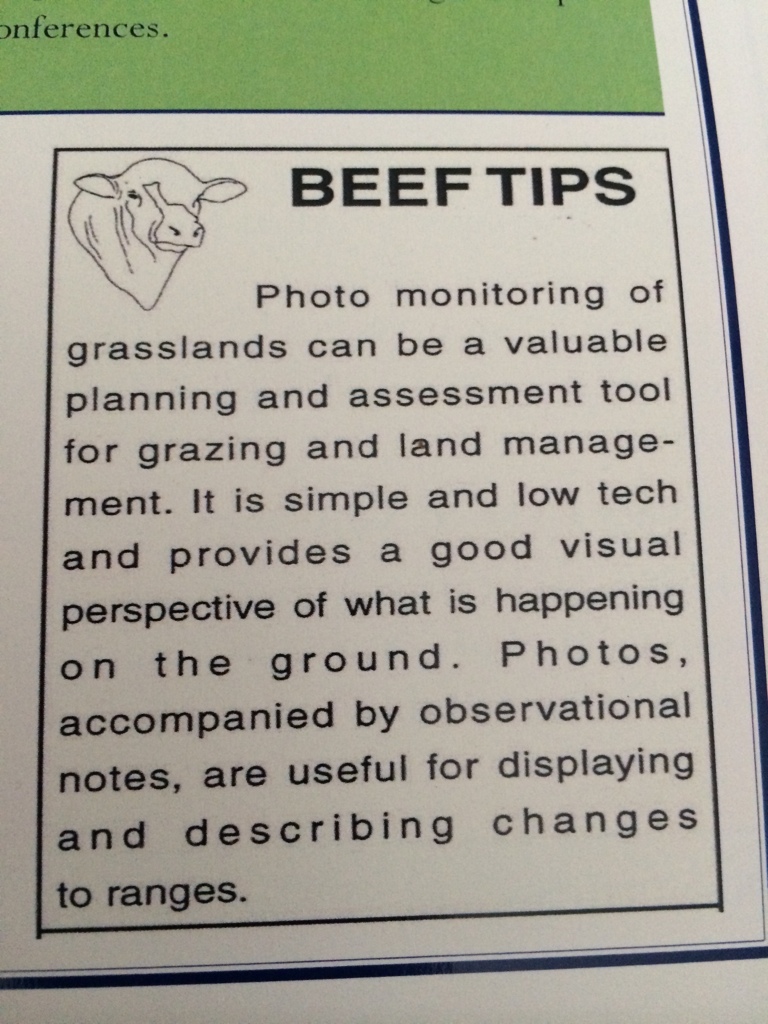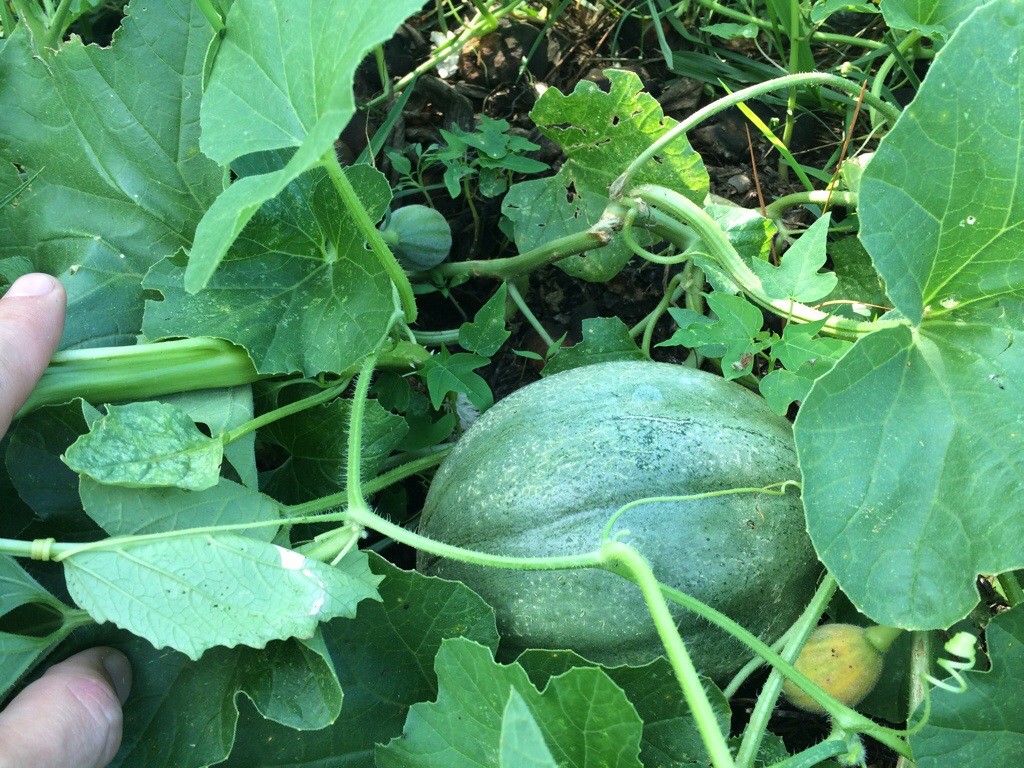
As I’ve said before, we feed a lot of fresh produce to our cows every day. One of the side effects of feeding all this produce is that some of the seeds end up germinating and growing new plants. Here we have a cantaloupe plant that has found itself a very nice spot and is going gang busters. It has set two fruits so far but there are dozens and dozens of flowers and we should have more cantaloupe than we can use in a month.

Here is a shot of the entire plant. It just keeps growing. The reason this is amazing is that before we started our current practices, it would have taken a pick axe to dig through the hard clay soil in this pasture. Now this cantaloupe is growing on a patch of black dirt with lots of organic material and with no assistance from us. Because its novel and because we like cantaloupe we will let it grow and mow it once it’s done. However, if the soil will grow a high value tender plant, it will surely grow some nice grass. This is just a sign that what we are doing is working.
